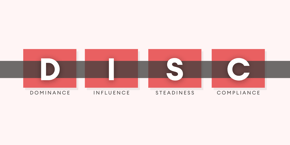A customer health score is essential to their retention. Scoring customers' health will alert you to at-risk accounts and help you find new opportunities.
As a manufacturer, wholesaler or distributor, 80 – 90% of next year’s revenue will come from your existing customers. Knowing which customers are at risk of leaving, could be buying more or are true advocates of your brand is an essential part of a successful business. To gain insight, you need to apply a customer health score to every account. You may already do this with a red, yellow, or green system. This does however have its limitations:
- it's manually updated, and we human folk can make mistakes
- The colors don’t reveal the actual reasons as to why they are that color
- Business growth usually sees lots of customers unscored
- The criteria tend to be very subjective
- Most senior management wouldn’t rely on it to give an accurate renewal forecast
The traffic light scoring system is a step in the right direction as it’s highlighting the health of each customer, but it needs to be consistent and updated automatically, if possible.
To ensure that all scoring is consistent you first must ask yourself “What does account health actually mean?” For example, if a customer scores 37 out of 100, or grade C (A-F), or are classified as green, what does this actually mean?
To get to the meaning, first, you must ask yourself these questions:
- Should your customer health score be a predictor of renewals or churn?
- How easily can a customer fluctuate between the stages?
- Does it include monetary values AND support costs to your business?
- What elements need to be factored in to contribute to the score?
- Are these elements based on facts or are they subjective?
- What weighting would you give to each element?
I’ll be blunt, this is NOT an easy process as everyone will have different opinions. The more people you involve the better insight you’ll have, but also, the more opinions. To build your customer health elements, you’ll need to agree on a minimum of 5. Here are a few to consider:
- Product usage
- Number of products bought
- Account growth (% or value)
- Length of time being a customer
- Number of times up-sold
- Number of times cross-sold
- Profit levels
- Net Promotor Score (NPS)
- Buying consistency
- Number of times they’ve contacted your support team
- Survey results
- Discount level
- Number of referrals
- Current relationship with your Account Manager
- Job level
- Engagement with marketing activities
- Size of company
This list is just a drop in the ocean to what you would consider as elements to score your customer’s health. The point is that every business is different and ultimately your list won’t be the same as the one above. You’ll probably notice that a lot of these are top-level elements and relate to usage, revenue and relationships. You could however include more obscure elements such as social media interaction or email opens. This is entirely up to you.
Using a system to automate this would ensure all accounts are updated regularly and consistent. If you can’t automate it or get the relevant information that you need then try a manual approach for your top 20% of customers – after all these are the ones that give you 80% of your revenue.
Do you need multiple customer health score systems?
In short, this is entirely up to you. If you feel as though you need a system for customers that are new (maybe up to 90 days old) and another for established customers, then do it!
You may also find that you want to add more scoring elements to your process to make it easier to analyze results, especially for high-value customers. These refinements can be made later though after the basics are in place.
Multiple customer health systems may be on your radar if your business is generating healthy, growing recurring revenue. After 3 years, you may see that existing business (renewals) revenue is higher than your new business sales. As this happens your need to create accurate renewal forecast models will increase and with this a need for a whole new customer health scoring system.
Accurate and timely account health scores will give you a trusted source of information to help you to prioritize the activities of your Customer Success or Account Management teams.
sales-i helps manufacturers, wholesalers and distributors to monitor and prioritize their existing customer accounts. It does this by tracking customers’ buying behavior, alerting them to leaking accounts, calculating profit margins and much more.



